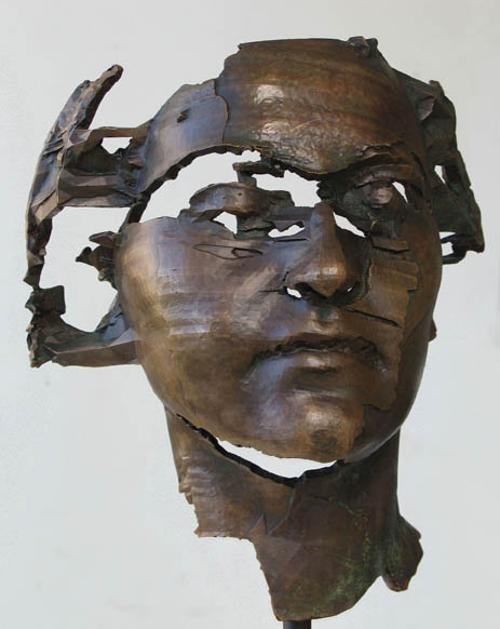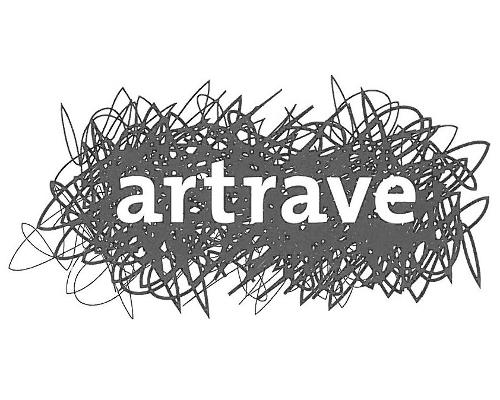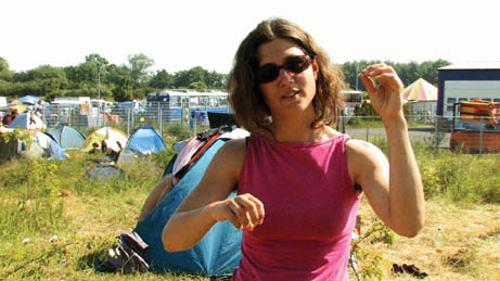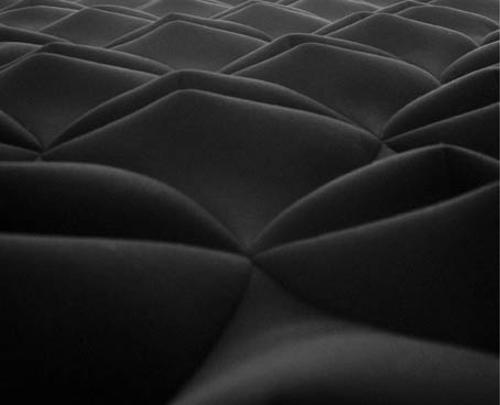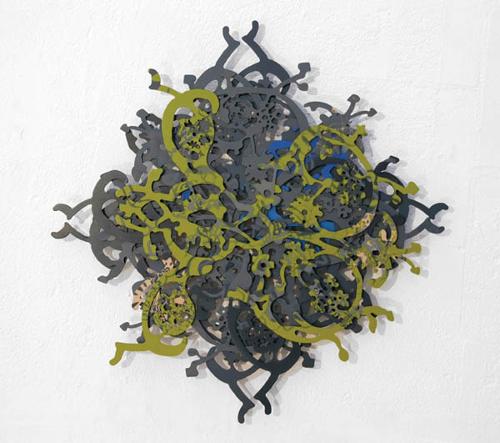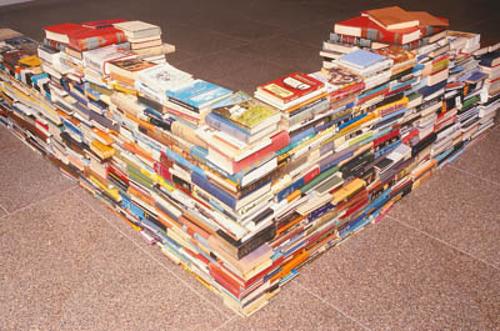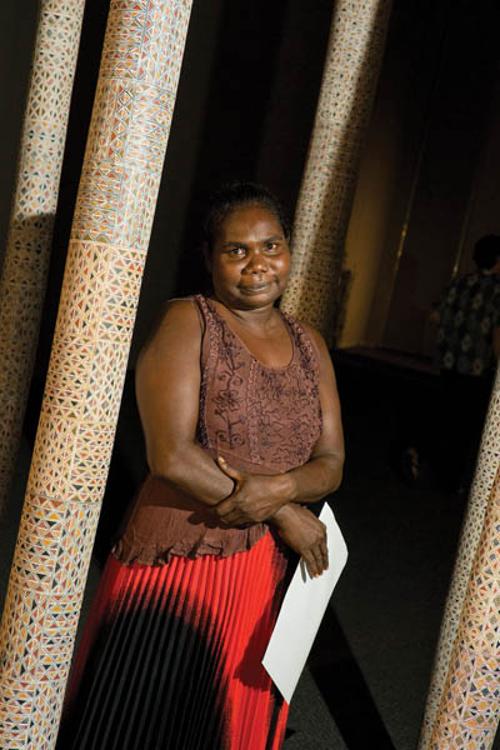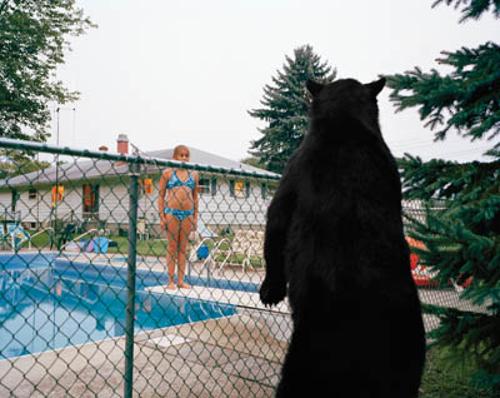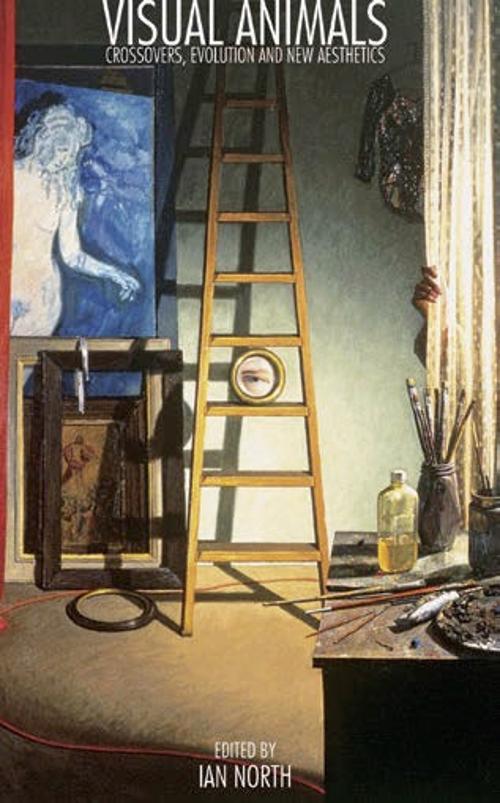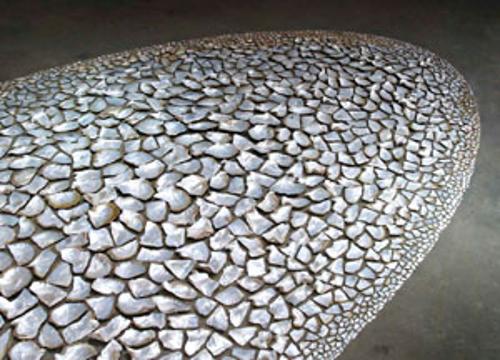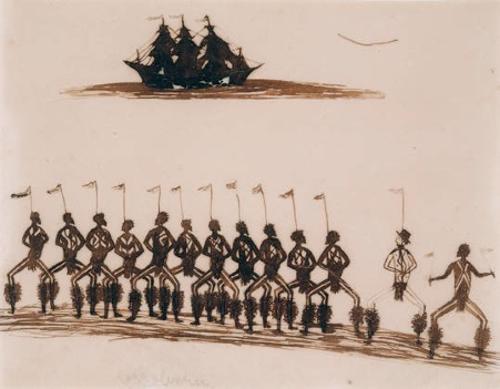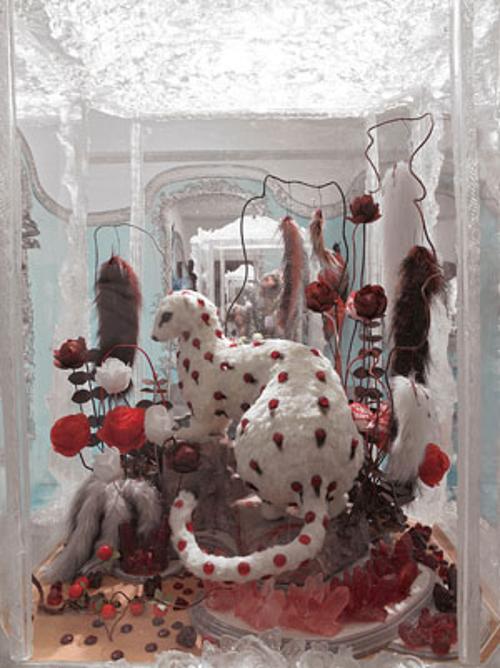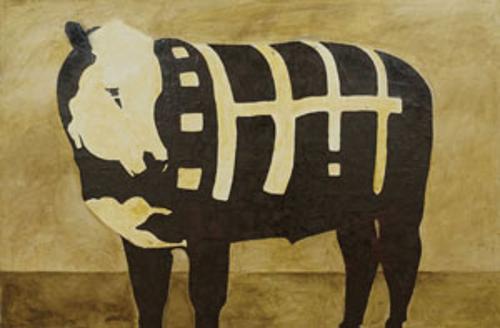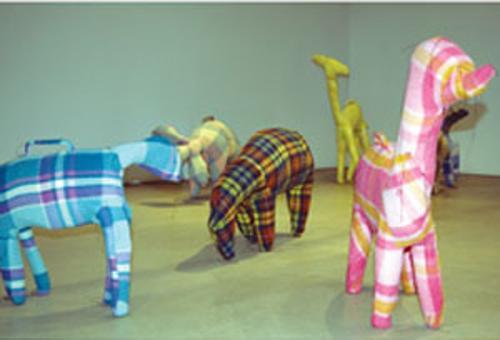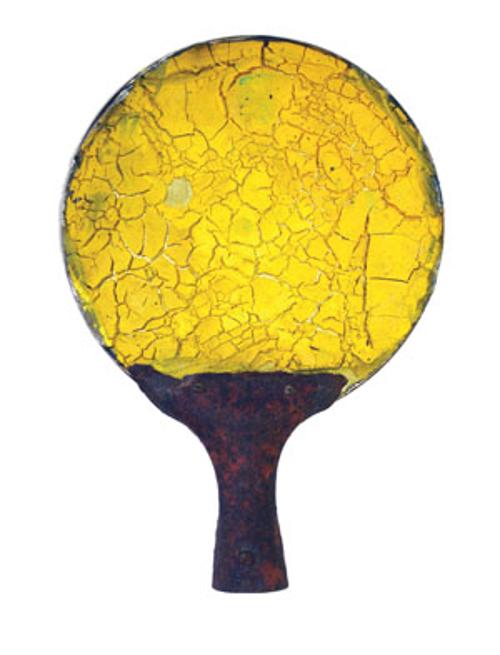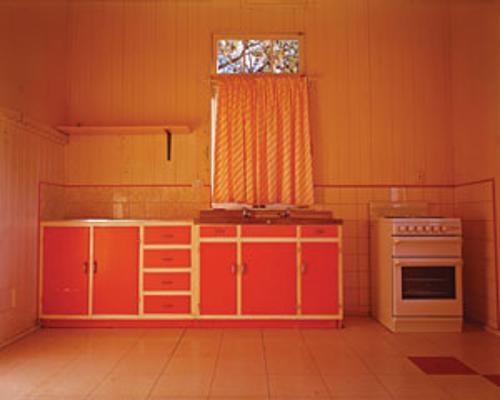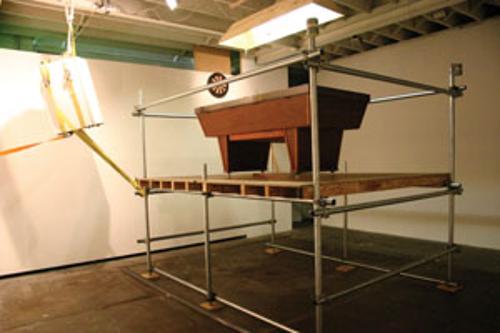Search
You searched for articles ...
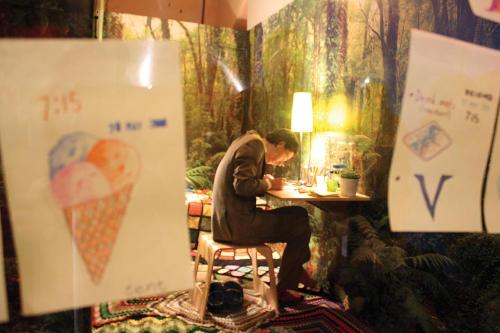
Right now I am unravelling: notes on the 2008 Next Wave Festival
A lively coverage of the exciting 2008 Next Wave Festival directed by Jeff Khan. Next Wave began 24 years ago and in 2008 presented the work of around 400 artist over 61 projects.
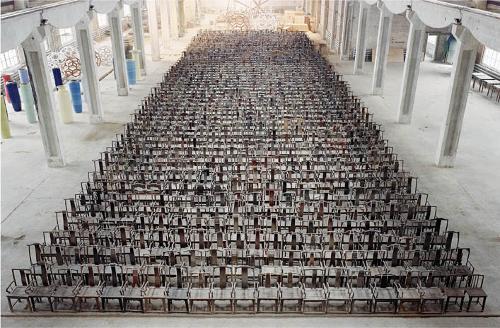
Curating a psycho-geography Campbelltown Arts Centre and the genius of Lisa Havilah
Campbelltown Arts Centre's chief curator and director Lisa Havilah creates challenging and confronting exhibitions like For Matthew and Others (2006), News from Islands (2007) and Ai Weiwei: Under Construction (2008). She believes that: 'contemporary art centres that sit outside of the metropolitan centres provide the highest level of opportunity for the development and application of new forms of curatorial practice.'
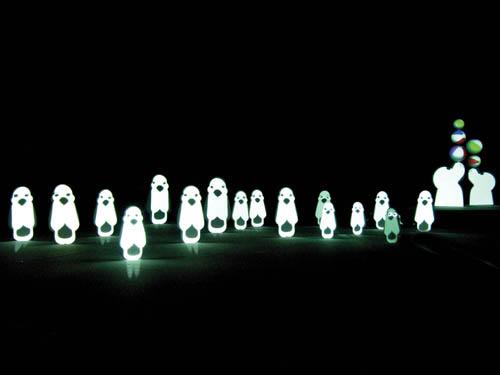
Beyond the temples: the way of idiosyncracy
Professor and artist Pat Hoffie interviewed highly creative, innovative and idiosyncratic curator Kevin Wilson, once Director of Linden, Director at Noosa Gallery where he devised The Floating Land project and most recently Program Director with the Queensland Artworkers Alliance and their ARC Biennial that opens in October 2009.
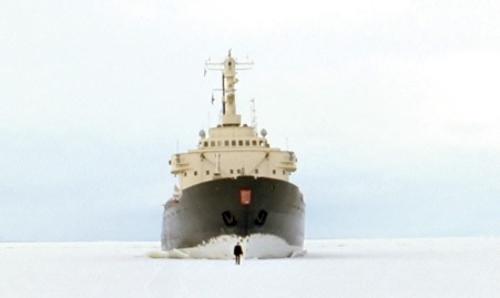
To curate or not to curate, 2008 in Europe: urban BB5 and post-industrial Manifesta 7
London-based Macedonian artist and writer Nadja Prlja compares the urban and modern 5th Berlin Biennial BB5: When Things Cast No Shadow (5 April - 15 June 2008) with Manifesta 7 (19 July - 2 November 2008) which occupied the whole arae of Trentoni in Italy. Prlja pays particular attention to the differences in the ways the projects were curated.
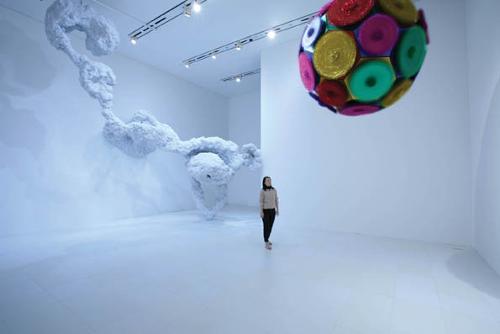
Curatorial Asia a twenty year perspective
As Director of Asialink Arts Alison Carroll has had twenty years of experience curating and facilitating the curation of exhibitions in or connected to Asia. Her analysis emphasises the complexity and cultural differences experienced by Asian curators in their home countries and looks forward to a more glocal future as they increase their international presence.
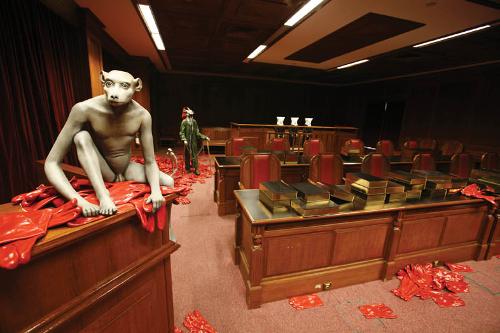
Places and contexts in two Singapore Biennales: curating courtrooms, containers and camps
Curator of the 2008 Adelaide Biennale Felicity Fenner discriminates between site-specific and site-responsive art practices in an analysis of the last two Singapore Biennales. She suggests that responding to the site may be the best way for a biennale to become more than an expo.
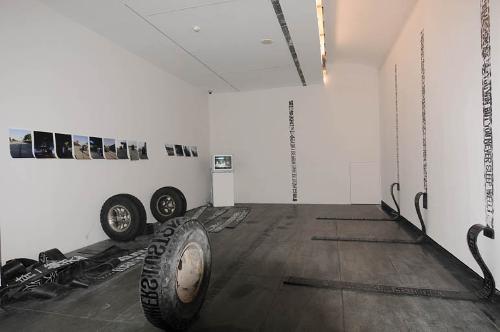
Curating Chinese themes: cheap labour, migration and capital, Shanghai Biennale and Guangzhou Triennial
In September 2008 Dylan Rainforth went to both the 7th Shanghai Biennale (Translocalmotion) and the 3rd Guangzhou Triennial (Farewell to Post-Colonialism). While he found mixed messages in Shanghai which was curated by artistic director Zhang Qing assisted by Julian Heynen and Henk Slager, it was Guangzhou curated by Gao Shiming, Sarat Maharaj and Johnson Chang that hit the sweet spot with 'witty, people-powered ways forward.'
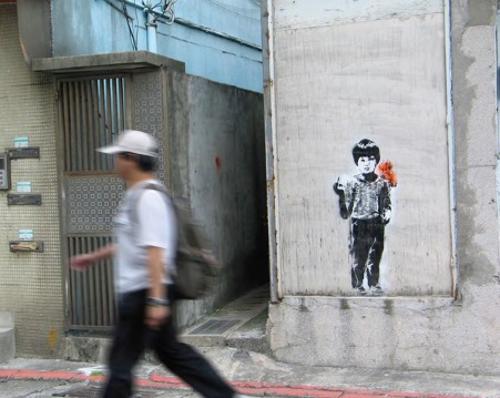
Manray Hsu taking a political position
Prominent Australian curator Victoria Lynn interviewed Berlin and Taipei-based independent curator Manray Hsu about his notions of decentralised cosmopolitanism and Archipuncture (a sort of acupunture that artists do to cities)..
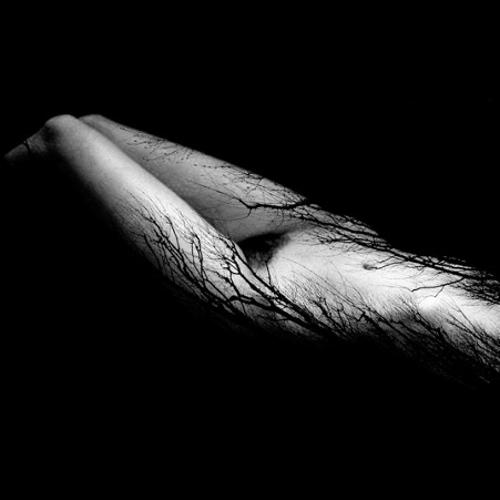
Hello Tokyo! Good to see you again
Artspace curator Reuben Keehan reflects on the Australia-Japan Visual Art Forum convened by Asialink in June 2008 as the Biennale of Sydney opened. The thirty delegates concluded the stimulating forum with recommendations about ongoing collaborations between curators using a variety of models, as well as the new ideas to be pursued of audience-in-residence programs and an Asian version of Manifesta.
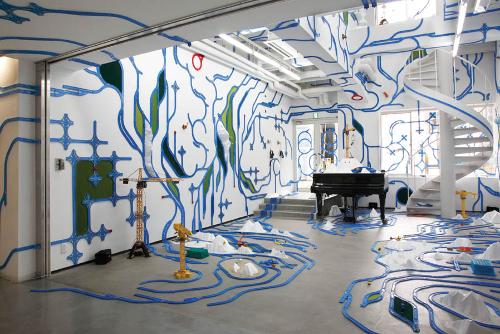
Hello Tokyo! Process is all
Diorama of the City: Between Site & Space 13 September - 13 October 2008 Tokyo Wonder Site Artists: Alex Gawronski, Gail Priest, Tim Silver, Hiraku Suzuki, exonemo, Paramodel
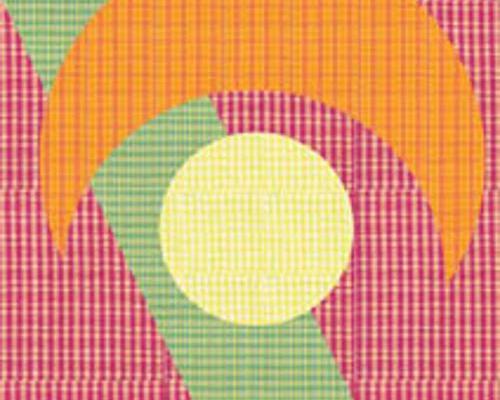
Hello Tokyo! Flagging it
Some Material Flags, MOT Tokyo, 22 October - 12 January 2009. Louisa Bufardeci
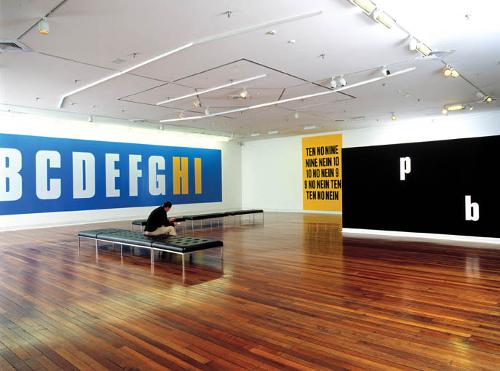
Throwing voices
Senior Curator at Christchurch Art Gallery Justin Paton reflects on curating the exhibition that he remembers most fondly and that speaks to him of the magic of curating - the show of wall paintings called Big Talk by US word- artist Kay Rosen in 2004 at the Dunedin Public Art Gallery.
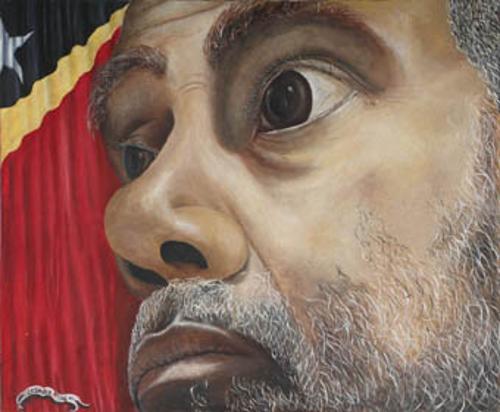
Back from the brink: culture in Timor-Leste
The Museum and Art Gallery of the Northern Territory (MAGNT)'s Curator of Southeast Asian Art and Material Culture Joanna Barrkman curated Husi Bei Ala Timor Sira Nia Liman /From the Hands of Our Ancestors which is on at MAGNT in Darwin from 21 November 2008 to 12 July 2009. The show celebrates the survival of Timor-Leste's cultural inheritance and asks whether traditional art forms and techniques have a role to play in the formation and assertion of Timor-Leste's national and cultural identity.
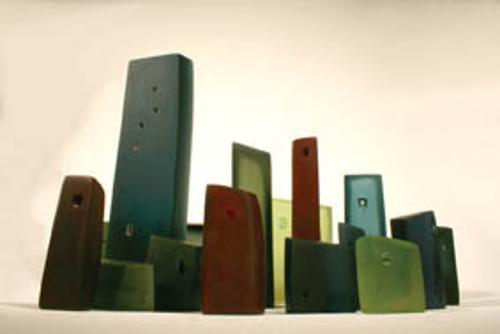
Firing across the gaps
In May 2008 Wagga Wagga Art Gallery's new Director Cath Bowdler curated Crossfire, an exhibition of resonating artworks from the Gallery's two major collections, the National Art Glass Collection and the Margaret Carnegie Print Collection, as a way of introducing herself to both the space and the place. Bowdler was initially inspired by the glass work Salt on Mina Mina by Dorothy Napangardi.
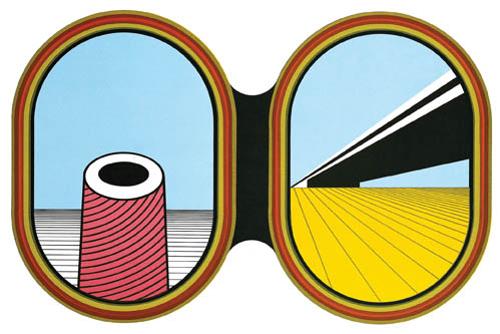
Species enhancement by international gene pool
Director of Wollongong City Gallery Craig Judd writes about the memorable experience of curating Wild Thang: post pop from the MCA, a show that combined works from the MCA's collection with corresponding pieces in the collections of the towns the exhibition visited: Bathurst, Armidale, Gold Coast and Albury.
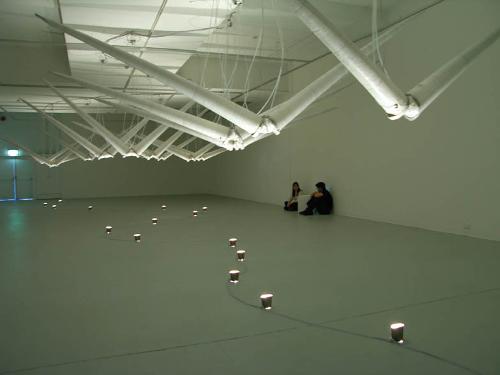
Curating paths, musical chairs
Outgoing Director of the Experimental Art Foundation Melentie Pandilovksi spills the beans on the current state of play internationally in terms of powerful independent curators moving into important positions in museums. He puts forward the prevalence of a 'new institutionalism' seeking to redefine contemporary art institutions from within. The EAF is about to release a Futures paper on this topic.
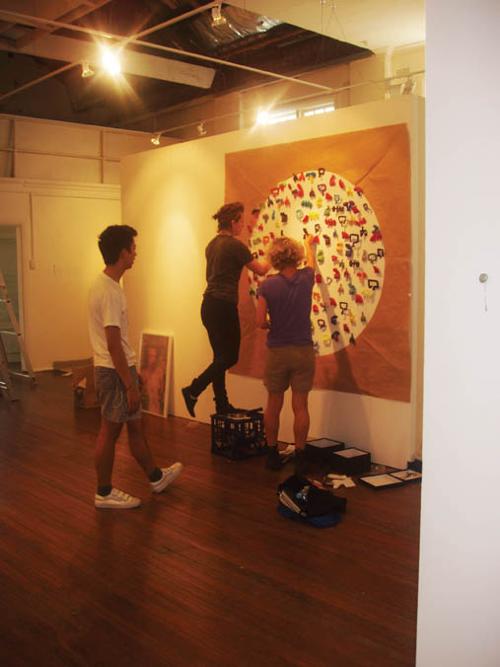
So you want to be a curator?
Joanna Mendelssohn, author and Associate Professor at the College of Fine Art, University of New South Wales where she co-ordinates the Master of Art Administration, writes about the highly competitive and financially unrewarding realities of getting a position as a curator in an art musuem.
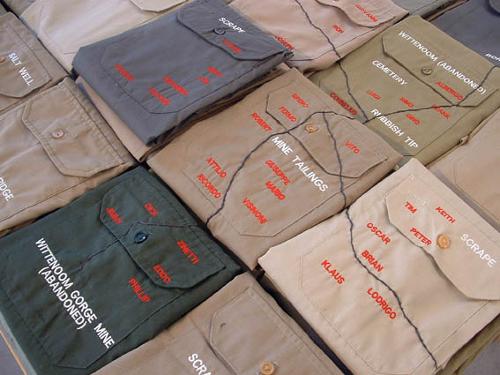
I've looked at love from both sides now: reflections on freelance / independent / guest curating
Juliette Peers, art historian and lecturer at RMIT, surveyed a number of freelance curators to find out how they work and why they embrace this insecure, interstitial existence. Hannah Mathews, Elizabeth Gertzakis, Vivonne Thwaites and Anne Kirker are among the freelance curators to whom she spoke.
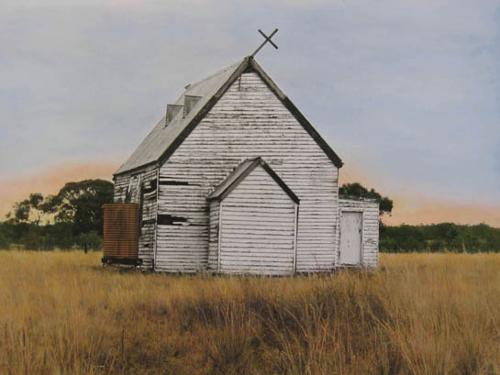
Emerging, educating and unruly: Vivonne Thwaites
Hahndorf Academy Curator Melinda Rankin reflects on the recent work of legendary freelance curator Vivonne Thwaites who introduced Rankin to the deep levels of research, the surprises, the risks and the sheer hard work of being a curator.
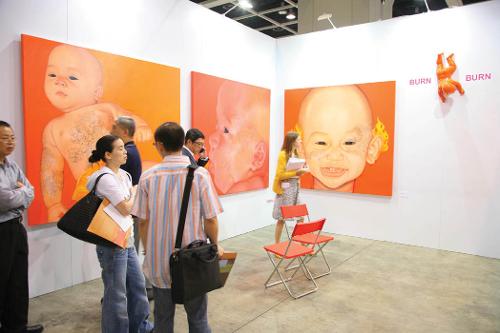
Video loops and VIP dinners: 2008 Beijing and Hong Kong Art Fairs
Artlink Executive Editor Stephanie Britton 'did' two major art fairs in our region, the first ever in Hong Kong - ART HK08 and the fifth Beijing one - CIGE (China International Gallery Exposition). She found them both fascinating and especially enjoyed the Mapping Asia and Alternative Energy sections of CIGE and the symposium organised by Asia Art Archive at HK08.
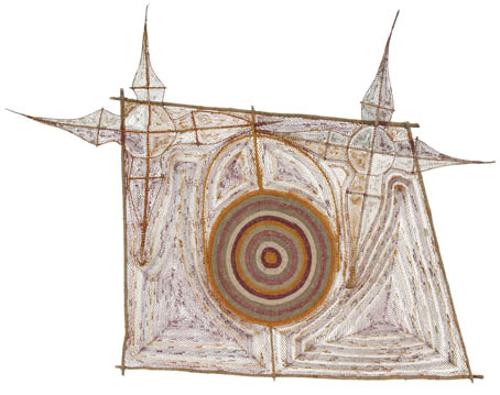
25th National and Torres Strait Islander Art Award (NATSIAA)
25th National and Torres Strait Islander Art Award (NATSIAA) Museum and Art Gallery of the Northern Territory (MAGNT) 15 August 26 October 2008
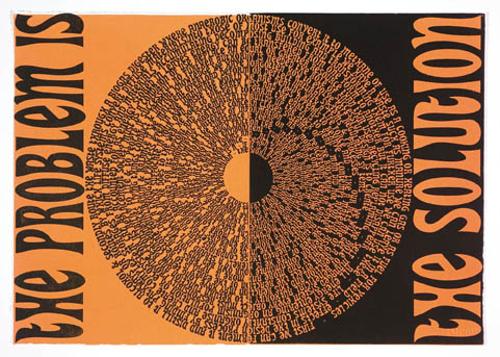
It's time: Emily Floyd
Its Time : Emily Floyd Australian Print Workshop Gallery, Fitzroy, Melbourne 23 August - 18 October 2008
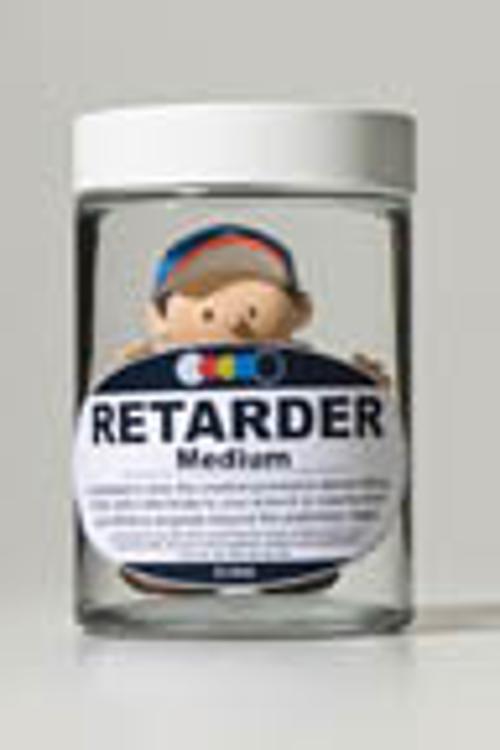
Spatsville: Memoirs of a failed painter: Alasdair Macintyre
Splatsville: Memoirs of a Failed Painter: Alasdair Macintyre Ryan Renshaw, Brisbane 23 September - October 11 2008
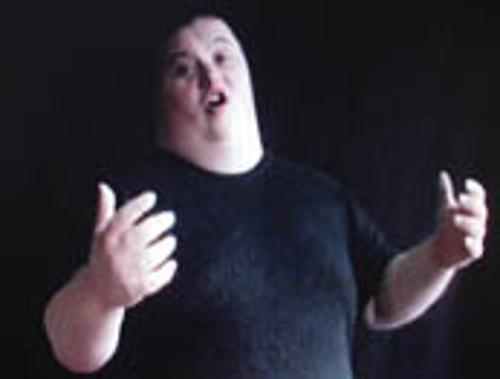
New social commentary 08
New Social Commentary 08 Warrnambool Art Gallery 6 September 2 November 2008
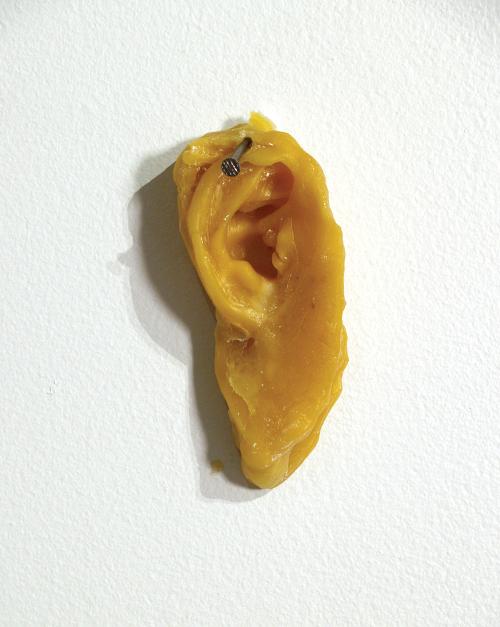
Shards: Judy Watson, Yhonnie Scarce, Nici Cumpston
Shards: Judy Watson, Yhonnie Scarce, Nici Cumpston Curator: Mary Knights South Australian School of Art Gallery (SASA) 30 September - 24 October 2008
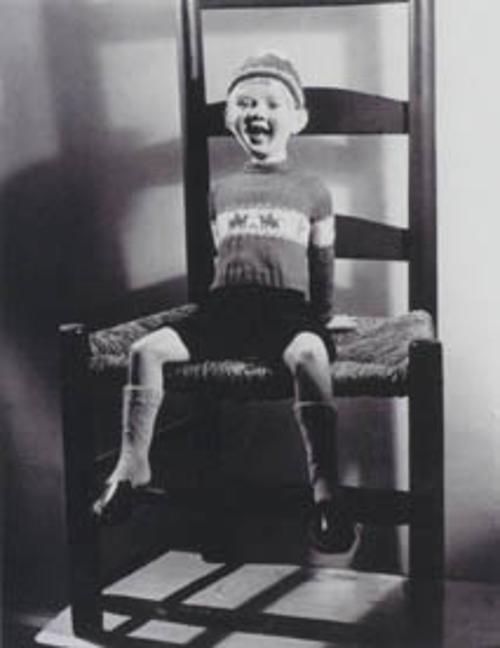
Without Borders: Outsider Art in an antipodean context
Without Borders: Outsider Art in an Antipodean Context Curators: Glenn Barkley, Peter Fay Campbelltown Arts Centre, NSW 30 August 21 September 2008
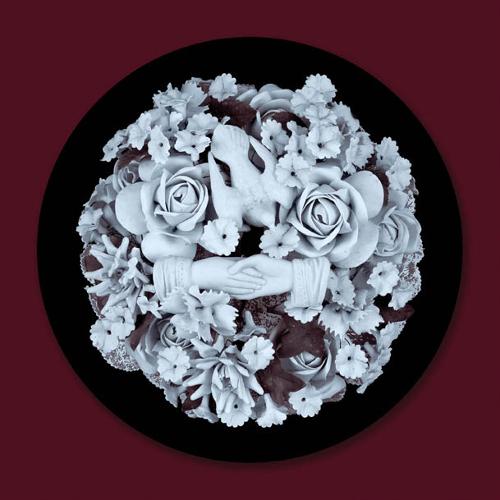
Ornament: Anne MacDonald
Ornament : Anne MacDonald Carnegie Gallery, Hobart 19 September 26 October 2008
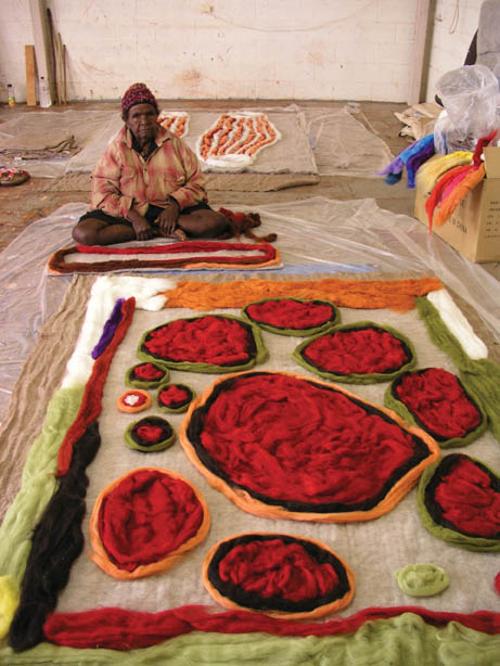
Warburtonta-latju Warntu Palyaranytja (We are doing Warntu work in Warburton)
Warburtonta-latju Warntu Palyaranytja (We are doing Warntu work in Warburton) Holmes à Court Gallery 1 August 14 September 2008
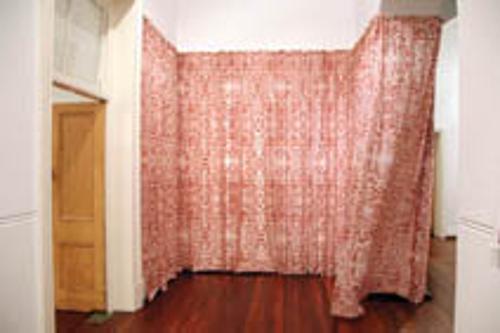
Fremantle Print Award 2008
Fremantle Print Award 2008 Fremantle Arts Centre 23 August - 5 October 2008
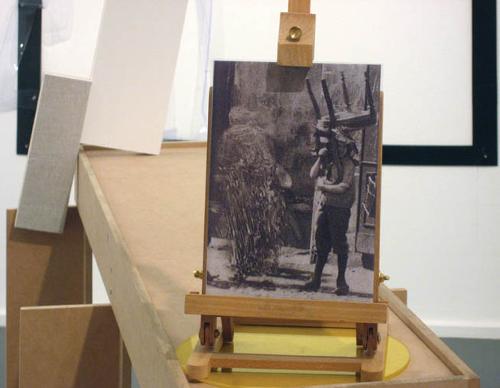
Exit music: a lake and a stand of trees: George Popperwell
exit music: a lake and a stand of trees: George Popperwell Contemporary Art Centre of South Australia (CACSA) 25 July 7 September 2008
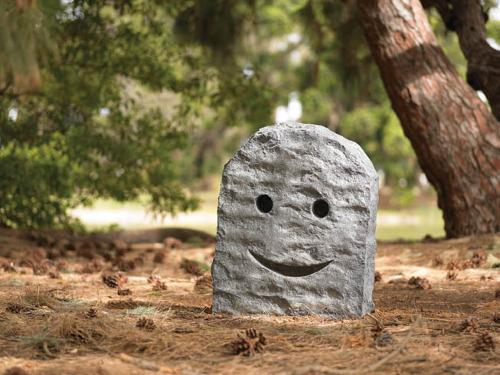
Neo Goth: black in black
Neo Goth: Back in Black Curator: Alison Kubler UQ Art Museum, University of Queensland, Brisbane 25 July - 21 September 2008
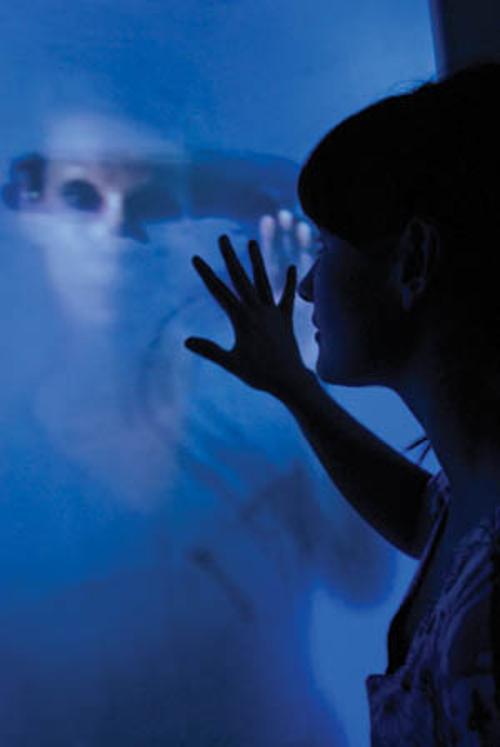
Lynette Wallworth: shared moments of revelation
Lynette Wallworth's New Media Art is subtle and complex. Empathy is the emotion at the heart of all her works such as Invisible by Night in which the viewer activates the work by reaching out to make contact with a grieving woman and Hold in which viewers catch imagery in glass bowls. Wallworths international profile is rising. She has exhibitions planned for France (Aix en Provence Festival), the Melbourne Festival in 2008 and the Adelaide Film Festival 2009 and with each new project she is striking an emotional chord in her audiences that resonates long after the physical engagement with the work is over.
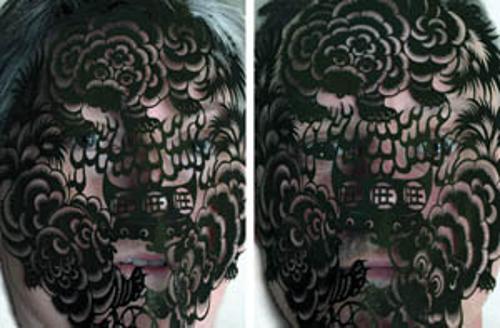
Rose Farrell and George Parkin: home (operating) theatre
Rose Farrell and George Parkin's art consist of photographs of tableaux involving the artists in sets that they build in their home. They frequently copy old medical illustrations in which the reality of the past is both made to live and to seem ever more mythical. Dylan Rainforth takes an informative and affectionate approach to the complexity of Farrell and Parkin's modus operandi and their newest photographic series called Restoration.
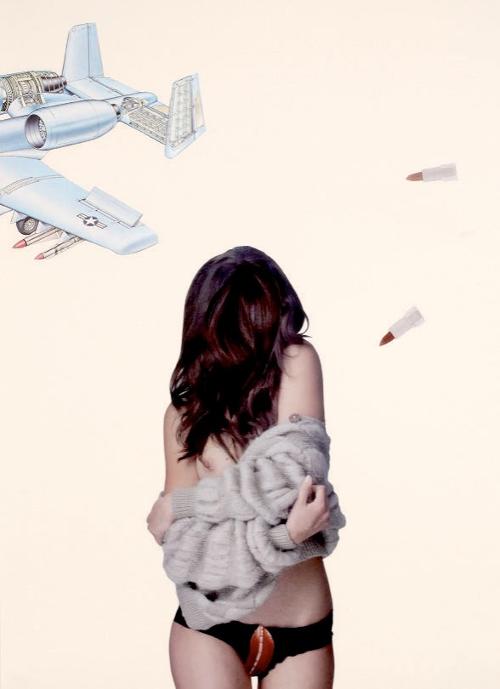
Deborah Kelly's gods, monsters and probable histories
Each of Deborah Kelly's projects has multiple identities and is cut to fit a certain idea. They are 'both nomadic and site-specific, traversing worlds from art institutions to supermarket shelves and creating multifarious audiences along the way'. Her best known work 'Beware of the God' was first projected over the MCA in 2005 and was last seen at the 2008 Singapore Biennale.
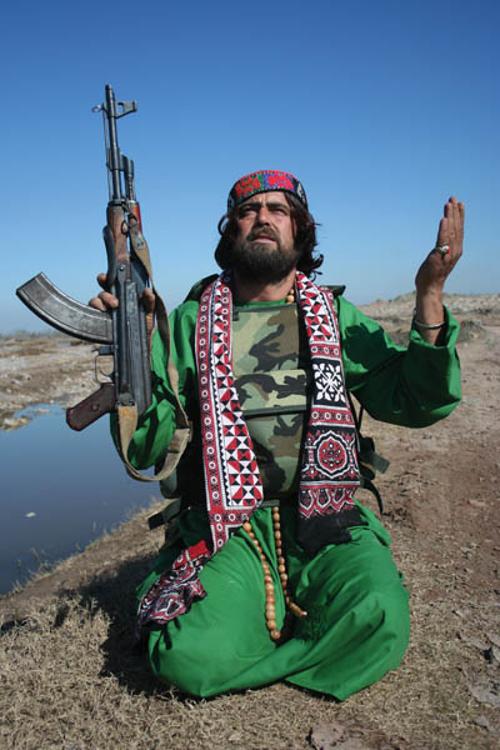
George Gittoes art and the war on terror
George Gittoes' latest film Miscreants was made in Pakistan and records the contradictions of life there with the polemic of Goya and the speed of an MTV music clip. This film follows his earlier cult films Soundtrack to War and Rampage. Gittoes is never a dispassionate observer, he continues to paint and to draw, making war art that is emotional as well as rich with the difficult truths of our time.
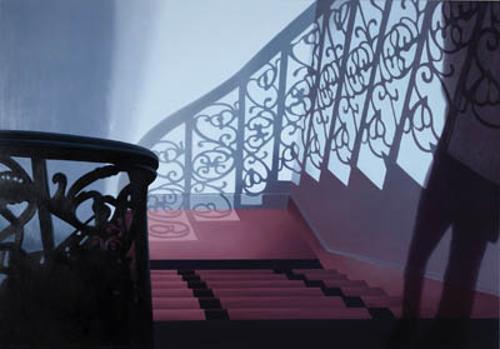
The dramatic tensions of some place: Mary Scott
Tasmania-based Mary Scott's art ranges across media from traditional to cutting edge. Sometimes she meticulously paints oil on linen from digitally devised imagery, at other times she uses multiple inkjet prints as the final work. Focusing on Scott's 2007 exhibition Some Place at Criterion Gallery in Hobart, Mary Knights describes her hallucinogenic and unheimlich works as depicting 'with detachment and clarity the spectrum of human fragility.'
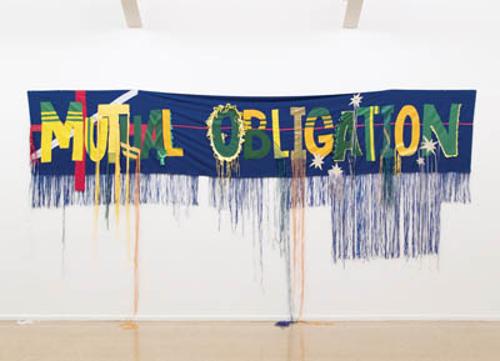
Landscape and complexity: Raquel Ormella
Raquel Ormella's art is political and takes many circuitous approaches to complex issues. Her recent work Wild Rivers: Cairns, Brisbane, Sydney shown in the 2008 Sydney Biennale called up a political landscape of maddening complexity even as it emphasises the need for direct action. Bec Dean writes: 'Ormella is a kind of critical idealist who understands not only the effectiveness of lobbying and the power of the individual in bringing about change but also the slow-burn persistence of such change.'

Craig Walsh transfigured nights, surprising days
The artworks developed by Craig Walsh over the last sixteen years in Australia and around the world take the immediacy of the moving image and place it in unexpected places doing unexpected things. With a strong global profile he is increasingly being asked to participate in prestigious international events, most recently Drift 08 in London and Koganecho Bazaar in Yokohama.
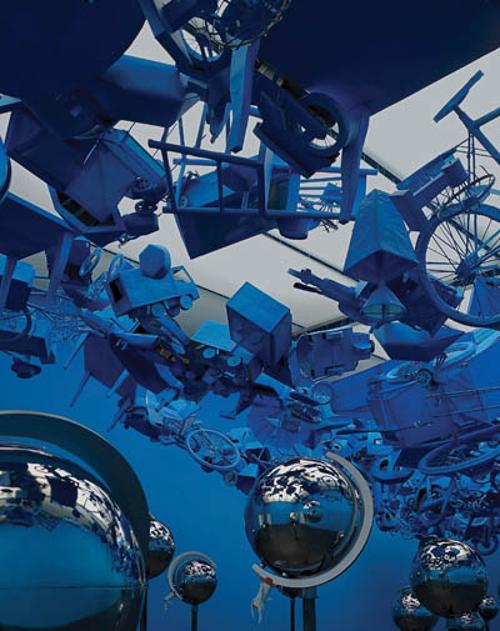
Jun Nguyen-Hatsushiba seduction and imponderability
Jun Nguyen-Hatsushiba's best-known work is the video Memorial Project Nha Trang, Vietnam: Towards the Complex - For the Courageous, the Curious and the Cowards (2001)in which fishermen ride cyclos (cycle rickshaws) underwater across the seabed. An engaging retrospective of Nguyen-Hatsushiba's thought-provoking and challenging work was shown in 2007 at the Museum of Art Lucerne and in 2008 at the Manchester Art Gallery displayed the work. In his most recent and ongoing work he is running a global marathon, the diameter of the earth. The artist says: 'After developing various kinds of memorial projects, I needed to experience the nature of physical struggle myself.'
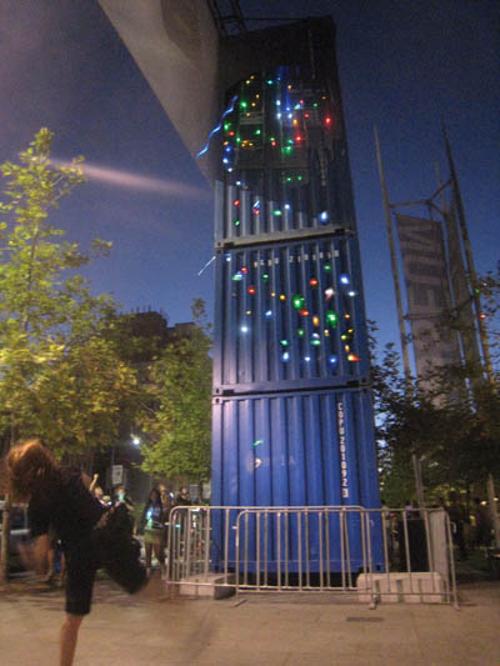
G.R.L. giving people opportunities to tear their city apart since 2005
In March 2008 James Powderly and Evan Roth of the New York-based Graffiti Research Lab (G.R.L.) spent time in Adelaide during the Festival as guests of Carclew Youth Arts. The Graffiti Research Lab is dedicated to outfitting graffiti writers, pranksters, artists and protestors with open source tools for urban communication. Today, an inventory of street artforms would include tagging, muralling, political sloganeering, stencils, stickers, paste-ups, installation, guerilla projection, culture jamming, and advertisement hacking. Powderly and Roth define graffiti as anything that happens outside in the city without permission. At the heart of all G.R.L. projects is the concept of open source , and perhaps it is this approach that has been their greatest area of influence.
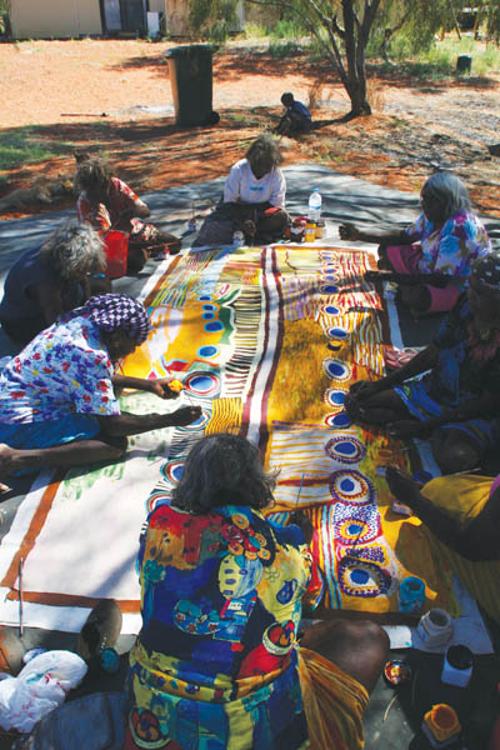
Aboriginal art: it's a complicated thing
Tim Acker, an independent arts consultant working with Aboriginal artists in remote and regional Australia, writes about the current situation. Questions of ethics in the sale, and making, of Aboriginal art are under review and an Australian Indigenous Art Commercial Code of Conduct has been developed though the 2008 Federal budget failed to fund its roll-out. Acker suggests that consumers become more educated about the art and about the provenance of the works they buy.
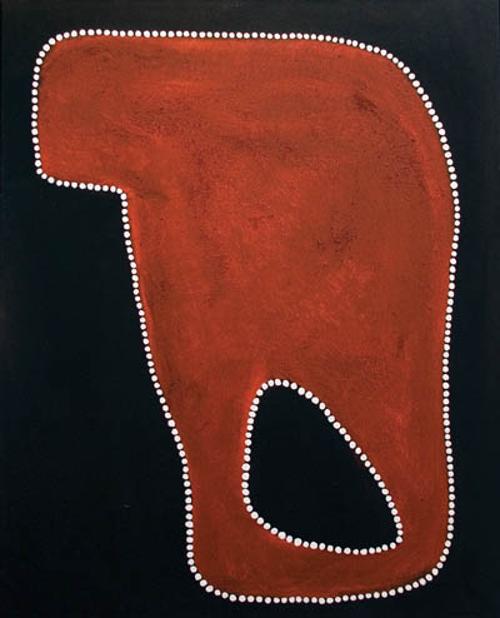
Problematic artworks or my doctor told me to take up painting to help me cope with the panic attacks
Suzanne Spunner, a graduate of Melbourne University's Art Authentication Program at the Centre for Cultural Materials Conservation, writes about the successful landmark prosecution of Pamela and Ivan Liberto for forging Rover Thomas paintings in November 2007. Meanwhile in April 2008 artist Nat Thomas, half of the art duo Nat and Ali, in an exhibition entitled 'Appropriation: how appropriate is it?', made and showed fake Rover Thomas paintings as an art prank. 'My doctor told me to take up painting to help cope with the panic attacks' is a quote by Pamela Liberto from the transcript of the case, appropriated by Nat Thomas as the title for one of her fake Rover Thomas works.
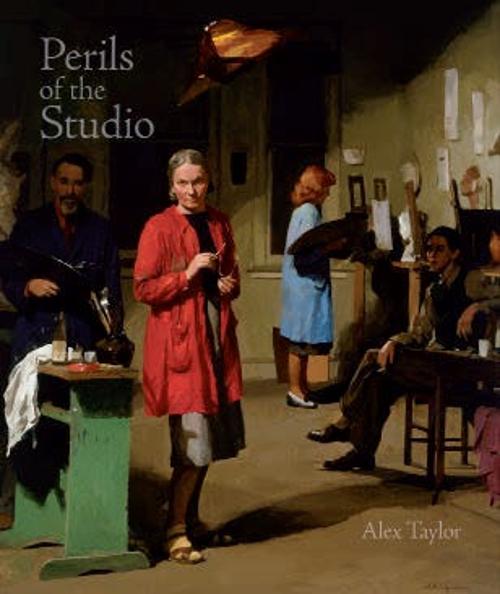
Perils of the studio: inside the artistic affairs of bohemian Melbourne, Alex Taylor
Perils of the Studio: Inside the artistic affairs of bohemian Melbourne by Alex Taylor, Australian Scholarly Publishing in association with the State Library of Victoria, 2007, hardcover, 212 pages RRP $59.95
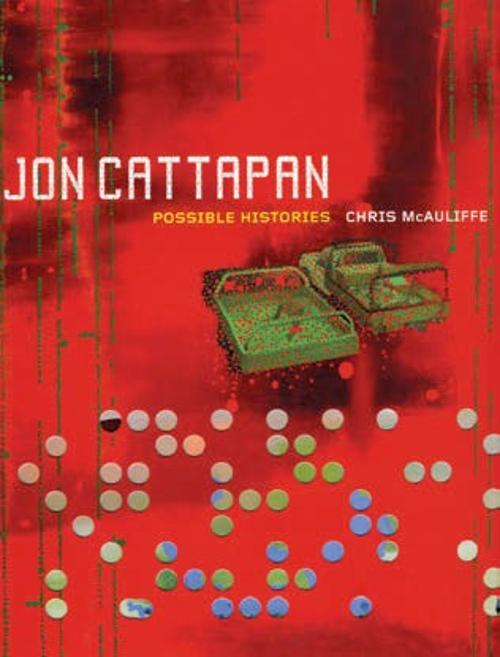
Jon Cattapan: possible histories
by Chris McAuliffe Melbourne: Miegunyah Press, 2008, RRP $49.95 Reviewed by Ian North
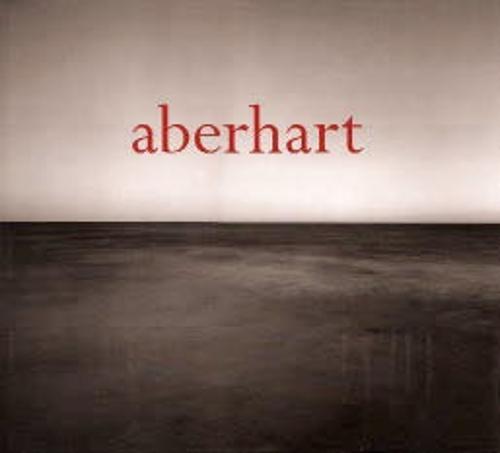
Aberhart
Photographs by Laurence Aberhart Essays by Gregory OBrien and Justin Paton Victoria University Press 2007 NZ $125
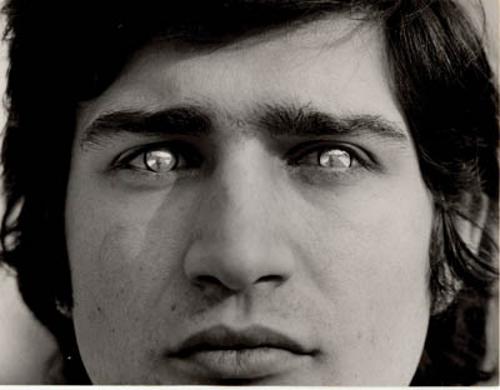
Biennale of Sydney 2008 Revolutions - Forms That Turn
Biennale of Sydney 2008 Revolutions - Forms That Turn Curator: Caroline Christov-Bakargiev 18 June 7 September 2008
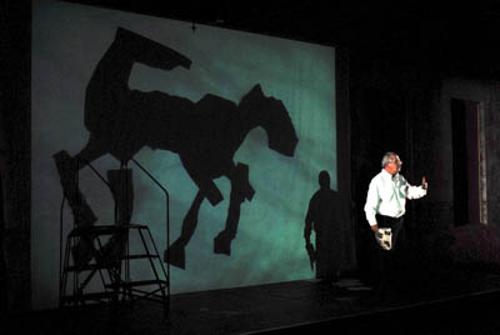
Performances at Biennale of Sydney 2008 Revolutions - Forms That Turn
Performance at Biennale of Sydney 2008 Revolutions - Forms That Turn Curator: Caroline Christov-Bakargiev 18 June 7 September 2008
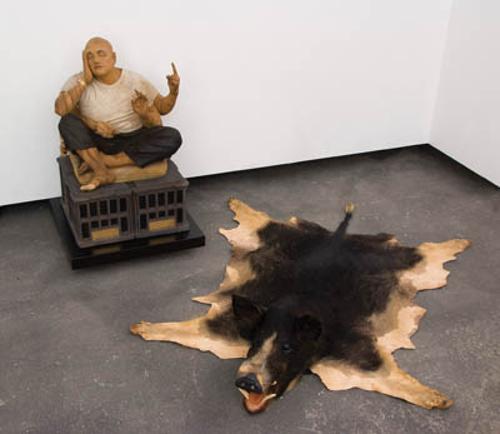
God-favoured, Rodney Glick: Surveyed
God-favoured, Rodney Glick: Surveyed Lawrence Wilson Art Gallery 13 June 10 August 2008
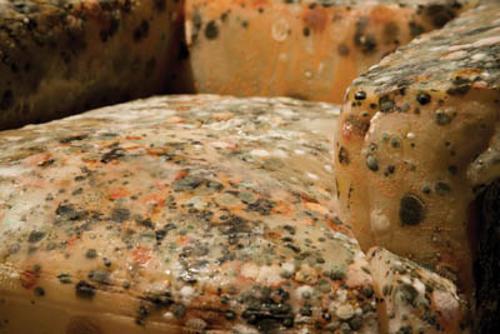
Companion Planting
Companion Planting Lucy Bleach, Michelle Cangiano, Dean Chatwin, Raef Sawford, Amanda Shone Curator: Jack Robins CAST Gallery, Hobart May 24 June 15 2008
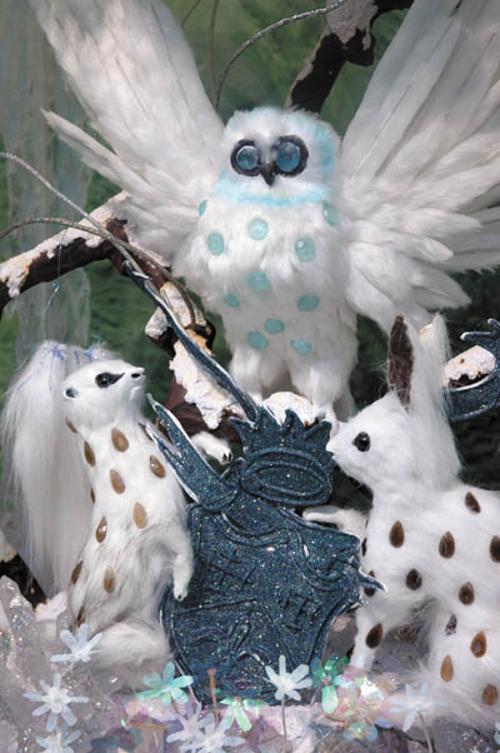
Kate Rohde: flourish
Kate Rohde: flourish Curator: Jenna Blyth TarraWarra Museum of Art 20 April - 20 July 2008
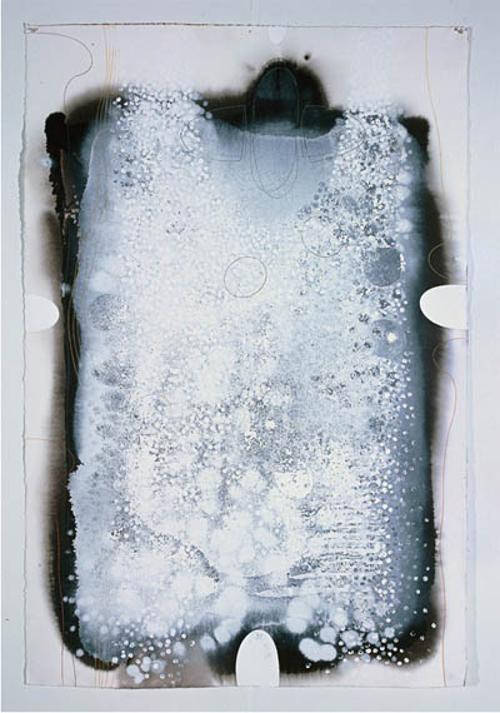
Ian Friend: Thirty Years of Works on Paper 1977-2007
Ian Friend: Thirty Years of Works on Paper 1977-2007 Curators: Gordon Craig and Anne Kirker QUT Art Museum, Brisbane 24 April- 29 June 2008
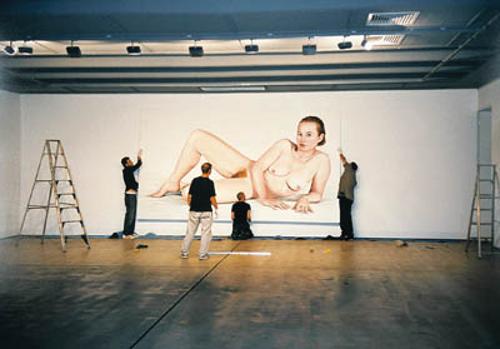
Uneasy: Recent South Australian Art
Uneasy: Recent South Australian Art Curator: Timothy Morrell Samstag Museum of Art, University of South Australia 20 June - 17 August 2008

The Lovely Season, Enrique Martinez Celaya
The Lovely Season Enrique Martinez Celaya Liverpool Street Gallery 27 February 27 March 2008
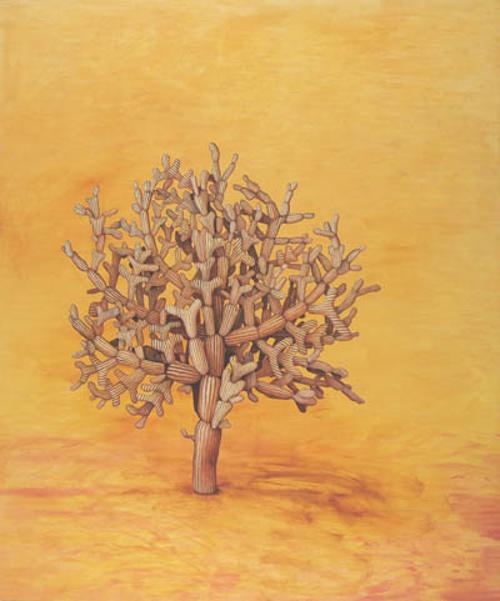
Bal Tashchit: Thou Shalt Not Destroy
Bal Tashchit: Thou Shalt Not Destroy Curators: Melissa Amore and Ashley Crawford Jewish Museum of Australia, St Kilda 8 April 29 June 2008
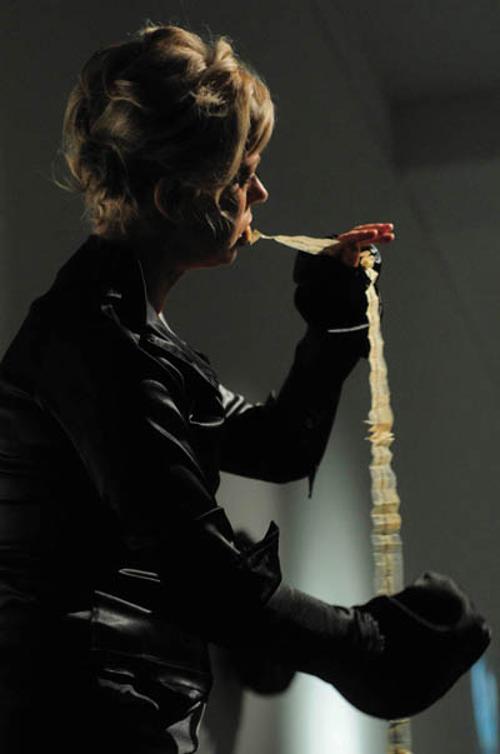
III Performances (in white cube)
III PERFORMANCES [in white cube] Linda Lou Murphy Ana Wojak & Fiona McGregor Alison Currie Curator: Melentie Pandilovski Experimental Art Foundation, Adelaide 30 May 5 July 2008

Translating from the dead to the living, Karin Lettau
Translating from the dead to the living Karin Lettau Design Centre, Tasmania 24 April 20 June 2008
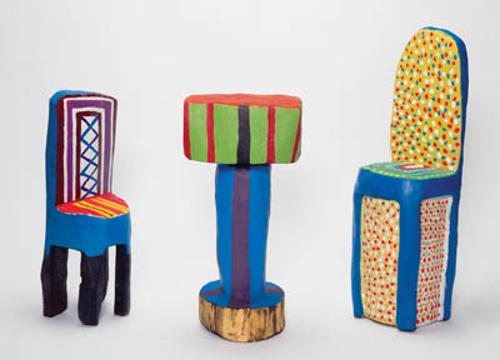
Xstrata Coal Emerging Indigenous Art Award 2008
Xstrata Coal Emerging Indigenous Art Award 2008 Gallery of Modern Art (GoMA), Brisbane 11 July 12 October 2008
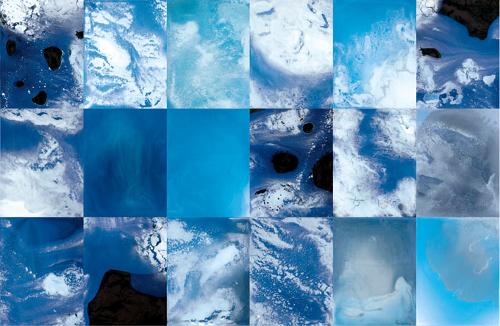
The romantic spirit
In 2007 Jennifer A. McMahon, senior lecturer in philosophy at the University of Adelaide, published a book called Aesthetics and material beauty: aesthetics naturalized. (See book review by Michael Newall, this issue of Artlink.) In the late 1970s McMahon was an art student looking for truth. Her move to philosophy to find truth makes use of Kant's doctrine of aesthetic ideas and argues that our perceptual and cognitive orientation to the world is reaffirmed through finding forms that seem to draw us to them for their own sake. When this occurs it unleashes ideas like immortality, infinity and freedom for which there are no perceptual counterparts. She argues that Beauty may be in the eye of the beholder but what constitutes the eye of the beholder is determined by culture.
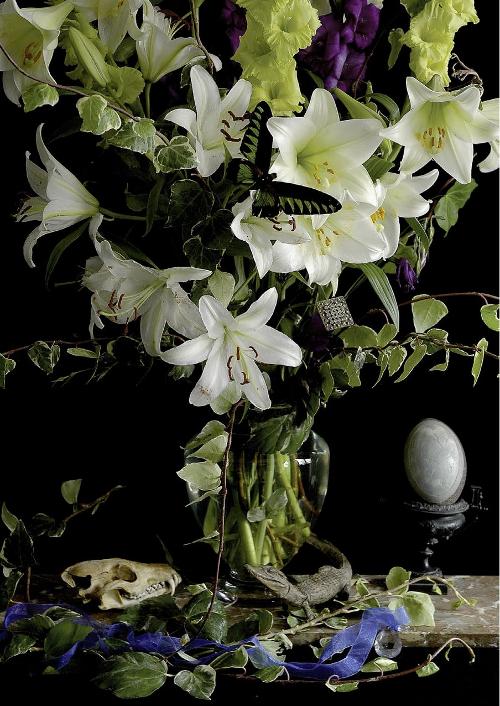
Truth and beauty entangled
Sian Ede is Arts Director for the Uk branch of the Calouste Gulbenkian Foundation where she initiated an Arts and Science program to encourage artists to engage with new thinking and practice in science and technology. She is editor and co-author of Strange and Charmed: science and the contemporary visual arts (2000) and author of Art and Science (2005). In this article Sian discusses the entanglement of truth and beauty by referring to John Keats famous 1820 poem Ode on a Grecian Urn and its statement that Beauty is truth, truth beauty, - that is all Ye know on earth and all ye need to know. and shows how relevant it is today in the fields of both art and science.
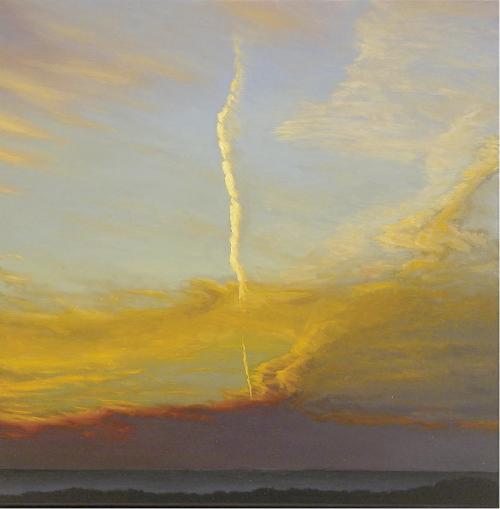
On sunsets
A voyage across sunsets in recent Australian art from Jim Thalassoudis to Anne Zahalka, Tim Storrier to Philip Hanson. While at the outset Ted Snell quotes with approval Oscar Wilde's statement that 'nobody of any real culture ever talks nowadays about the beauty of sunsets' he goes on to show the enduring and meaningful presence of the sunset in both paintings and photography. Thus he demonstrates that art involving repossession and reinvention can, in spite of having to deal with accusations of kitsch, parochialism and provincialism, turn old themes into pure gold, both actual and emotional.
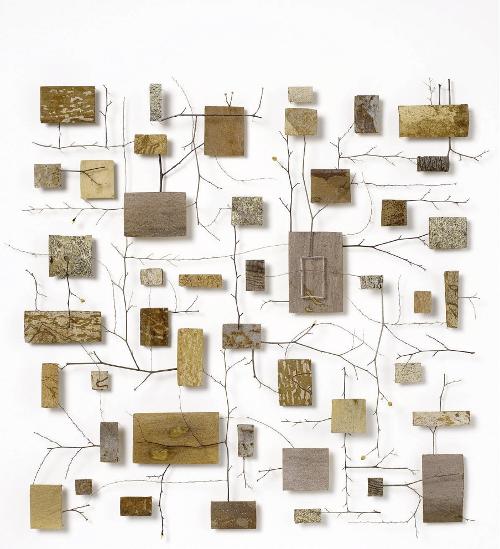
Australian Beauty
Beauty is problematic for contemporary art theory at least in part because it affords a pleasurable, life-affirming, yet ineffable experience. Yet Margot Osborne finds many examples to show that it has never really gone away. As Peter Schjeldahl observed in 1996: Beauty will be what it has always been and, despite everything, is now in furtive and inarticulate ways: an irrepressible, anarchic, healing human response without which life is a mistake.' Osborne writes: Embodiment, the synthesis of sensibility, skill and material form, is at the heart of beauty...The perception of beauty is an integrative sensual and cerebral experience, dissolving dualities of mind/body and repudiating outmoded art form hierarchies.

Shimmering fields
An essay on Indigenous aesthetics in the paintings of John Mawurndjul and Gulumbu Yunupingu from Arnhem Land, and Doreen Reid Nakamarra form the Central Desert as their work appears in the exhibition Culture Warriors, the first Indigenous Triennial, curated by Brenda Croft and reviewed in Artlink (Vol 27 #4) by Daniel Thomas. 'Their works are site-specific, alive with meaning and essentially metaphysical and religious in conception. For these artists beauty equals power, the power of the creation stories that underpin their art.'
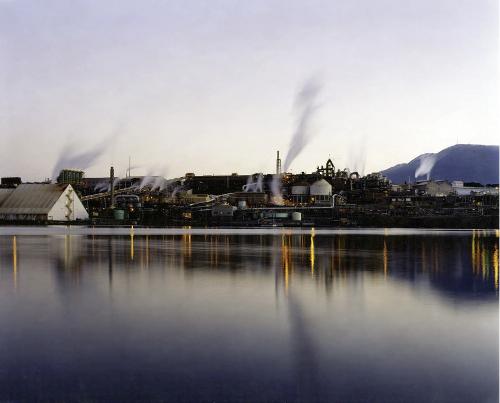
Gatecrashing the sublime
In his youth as a regional gallery director Peter Timms imagined an exhibition called Flat Earth that would show all country artists that where they actually lived was, like anywhere else, able to be transformed into art. This article looks at the different approaches to landscape taken by the work of Tasmanian artists David Keeling, David Stephenson, Philip Wolfhagen and Richard Wastell, and how they transcend social, moral or political point-scoring to achieve their own kind of beauty, a clear-eyed, unsentimental appreciation of the environment as it really is, which frankly acknowledges the harm, both physical and conceptual, that has been inflicted upon it.

Some digressions on ornament, abstraction and the stowaway
An erudite elaboration of the concept that a certain amount of ornamentalism in art rather than being the opposite to minimalism is present within it as a secret stowaway. Wendy Walker muses on this topic with particular reference to the 2001 exhibition Ornament and Abstraction at the Fondation Beyeler, Basel, and its curator Markus Bruederlin's premise that ornamentation has played a more integral role in the development of abstract art than has previously been supposed. Walker illustrates her thesis with works by Christian Lock, Stieg Persson and Timothy Horn.
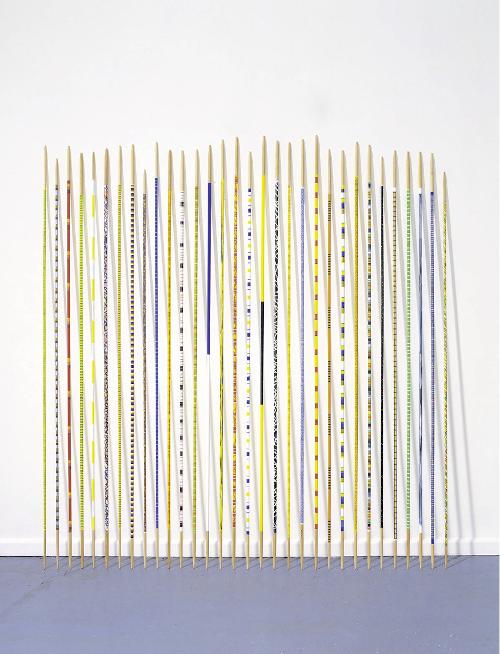
Karl Wiebke
Karl Wiebke has been making art for thirty years. Margaret Moore selectively reviews his oeuvre and concludes that though 'Beauty as an ideal is not a platform for his practice it is a consequence. His works are profoundly and atmospherically evocative of mood, weather, or nature like a bed of lichen or a sense of saturation. He has adopted a programmatic approach to his practice, setting schema and working toward attainment. That schema might incorporate an obligation of time, of mark-making, of palette or the allowance for interventions other than by his hand.
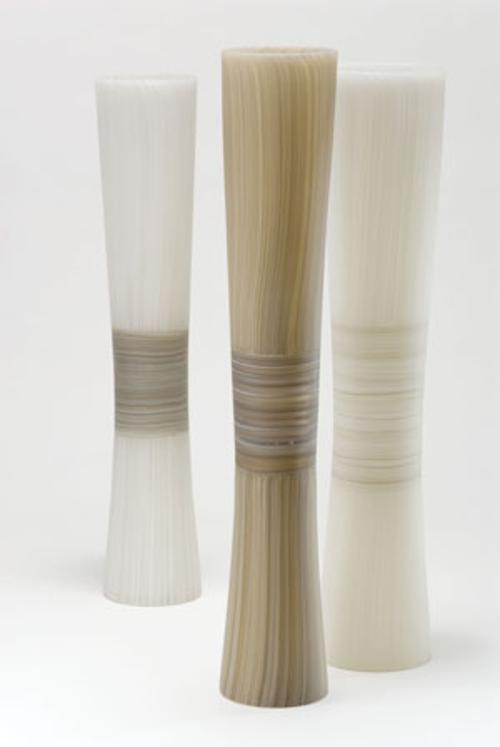
Cobi Cockburn
Cobi Cockburn is a glass artist whose work reflects her journey through the world, first in response to the country around Canberra and more recently the Shoalhaven district. It is her personal response to the landscape in which she lives (as opposed to a larger environmental message) which drives her to continue to push herself with a medium not typically used for landscape. Cockburns working methods of fusing, slumping, rolling, hot forming and cold working glass demonstrate clear connections from one piece of work to the next. Central to her motivation is the desire to create works of subtlety and grace. Cockburns working methods demonstrate clear connections from one piece to the next, yet each piece is a self-contained process in itself. A self-confessed addict of her book (her journal), Cockburn says that when she reviews her collection of journals, she can trace progress and a sense of continuous narrative. But she feels, on the whole, that her work is evolving more as a natural process as she herself develops both as an artist and a person. Each piece has its own essence, or presence, and comes together with others as collections which reflect part of the greater experience. Central to her motivation is the desire to create works of subtlety and grace, pieces that will stand for themselves but not shout at the viewer.
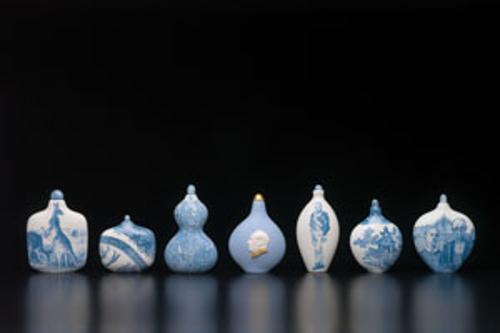
Robin Best
Robin Bests ceramics reflect her attention to the importance of location. Her forms are classical, meditative and reflective, and has ranged from marine forms to works decorated by Ernabella artist Nyukuna Baker. Her most recent body of work undertaken during and after a number of residencies in China reflects the complexity of the cultural, commercial and political history of China. Her snuff bottles are a picture gallery of images related to trade, culture and commerce, while others contain designs taken from each of the countries that blue and white porcelain passed through on its way from China to Europe via India and the Middle East.
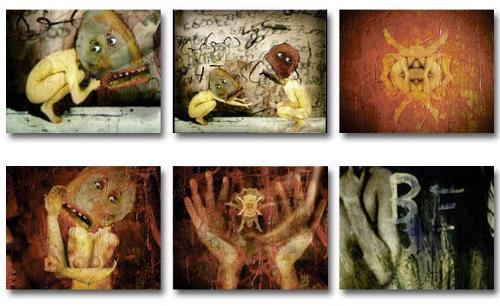
Tina Gonsalves: Unleashing emotion
Tina Gonsalves is currently honorary artist in residence at the Wellcome Department of Imaging Neuroscience and visiting artist at the MIT Media Lab in the US. Her recent work is interested in adaptive, rather than expressive approaches to mental and emotional states. Gonsalves situates emotional states as rhizomorphic and emergent. In her new works, she has given the media art world a new concept, the emotional algorithm. Feel: Chameleon (2007/2008) introduces multiple subjects, both projected images and people, into a panoramic installation. It is a complex exploration of ideas drawn from the emerging discipline of social neuroscience which is interested in the ways in which people connect with the emotional state of others.
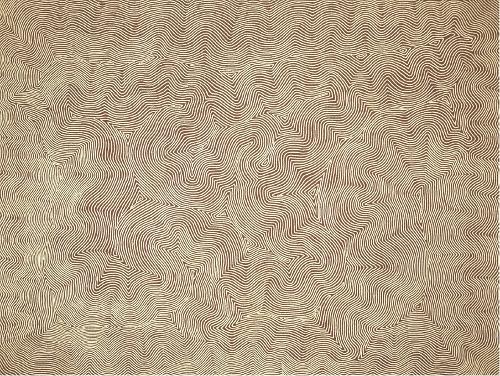
Ellen Dissanyake: homo aestheticus
In this phone interview conducted by Margot Osborne with North American ethologist Ellen Dissanyake in her home in Seattle her case for a species-centric approach to art is explored through the ideas in her books Homo Aestheticus (1992) and Art and Intimacy (2000). She states that some form of art as an activity has existed in all societies across all times and is innate in human nature. The core of this innate activity is making special, or elaboration. From this species-centric perspective, many recent developments in art are seen by Dissanayake as unfortunate aberrations and a denial of the positive life-enhancing qualities of art.
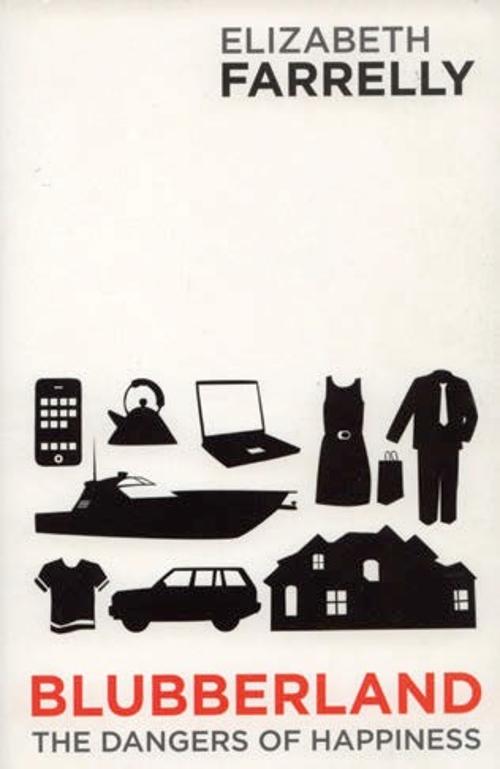
Blubberland: the dangers of happiness, Elizabeth Farrelly
University of New South Wales Press, 2007 RRP $29.95
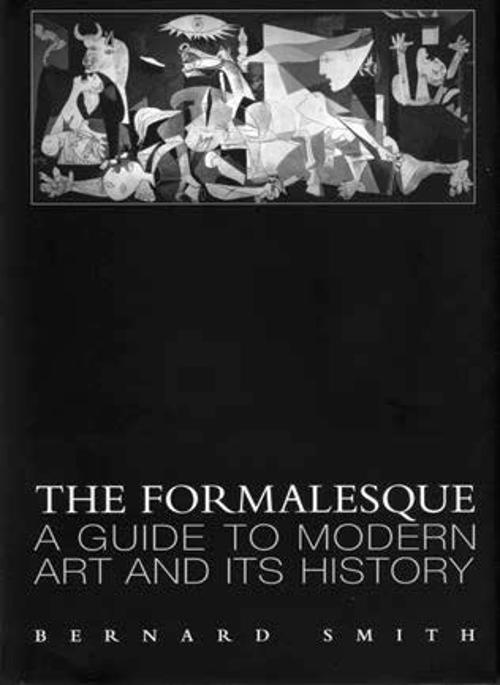
The Formalesque: a guide to modern art and its history, Bernard Smith
Macmillan Australia 2007, RRP $135.

Aesthetics and material beauty: aesthetics naturalized, Jennifer A. McMahon
New York and London, Routledge 2007, RRP US$135

The realities of power
This is the third chapter of an unpublished autobiography by art theorist and national treasure Donald Brook. Previous chapters were published in 2005 in Artlink Vol 25#3 and in 2006 in Vol 26#4. In The Realities of Power Brook recapitulates what happened in terms of teaching and policy at the Power Institute, University of Sydney, in the late sixties when he first arrived in Australia from the UK. His long and detailed account explores why, in his opinion, the early Power Institute had so little impact on Australian visual culture. The rest of Brooks autobiography waits in the wings.

The 32nd congress of the international committee of the history of art (CIHA)
A brief description on the 32nd CIHA and its relevance in relation to art history and practices.

Insights and a conversation
A brief but notable account of the 2008 CIHA from the perspective of Anne Kirker describing the key speakers and their topical lectures in relation to art history. Kirker further elaborates on her experiences at the CIHA and what she deemed intellectually stimulating and intriguing. Kirker also summarises the general relevance and opportunities the CIHA provides.
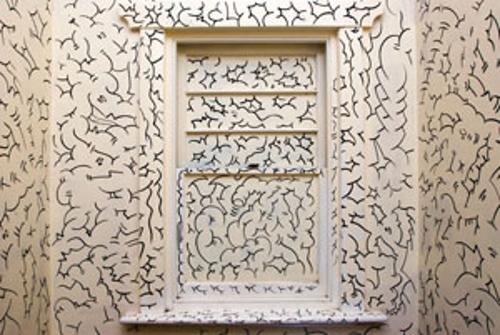
One night only project
Curators: Kate Kelly and Pip Stafford Artists: Lindsay Arnold, Braddock, Lisa Campbell-Smith, Lachlan Conn, Moira Corby, Scot Cotterell, Lindsay Cox, Empire, Ghostpatrol, Andrew Harper, Jamin, Kate Kelly, Kirsty Madden, Noble, Michael Prior, Pip Stafford, Andy Vagg. Sound Artists: Chrysalis, Cycle, Global Ethnic, Matt Neidra. 29 March 2008
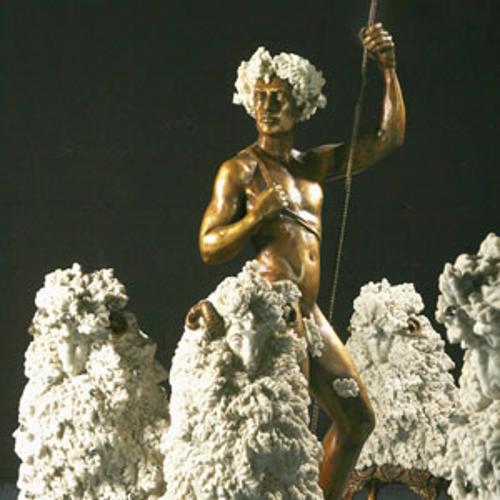
Chaos and revelry: Neo-Baroque and camp aesthetics
Curator: Edwina Bartlem 18 January 10 February 2008 Counihan Gallery, Brunswick
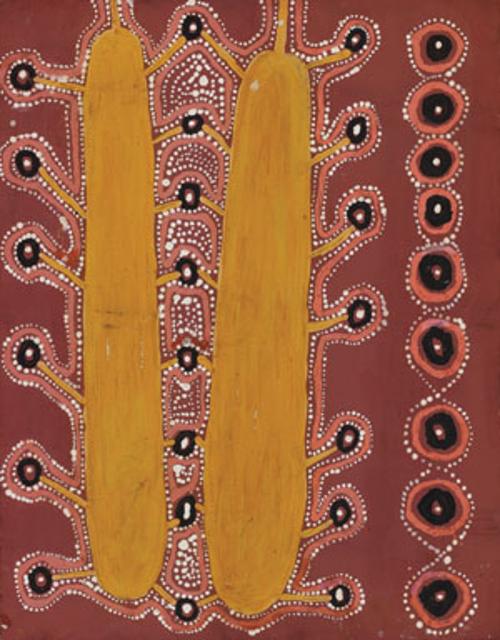
Papunya Painting: out of the desert
Curator: Vivien Johnson National Museum of Australia 28 November 2007 3 February 2008
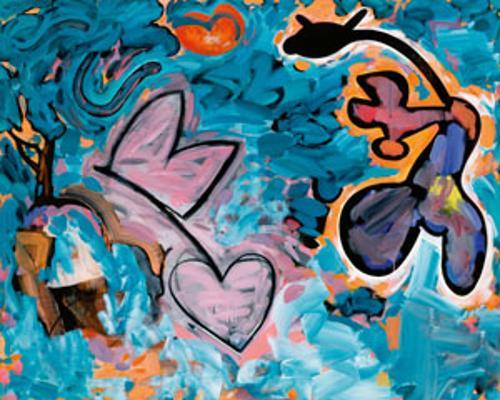
The Ship of fools: recent paintings, Bill Brown
Wilson Street Gallery, Newtown 29 March - 20 April 2008
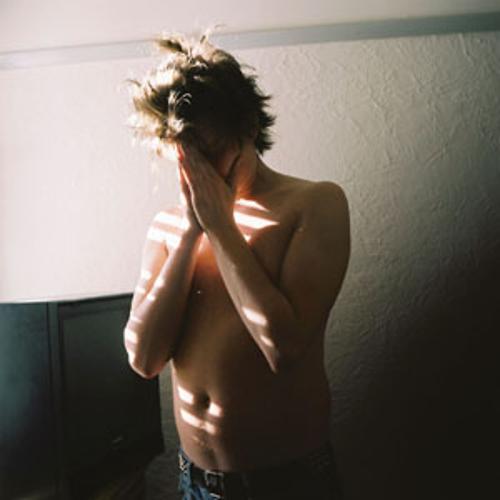
Now that I am a man I can go to war: Angela Lynkushka
Monash Gallery of Art 29 February - 27 April 2008
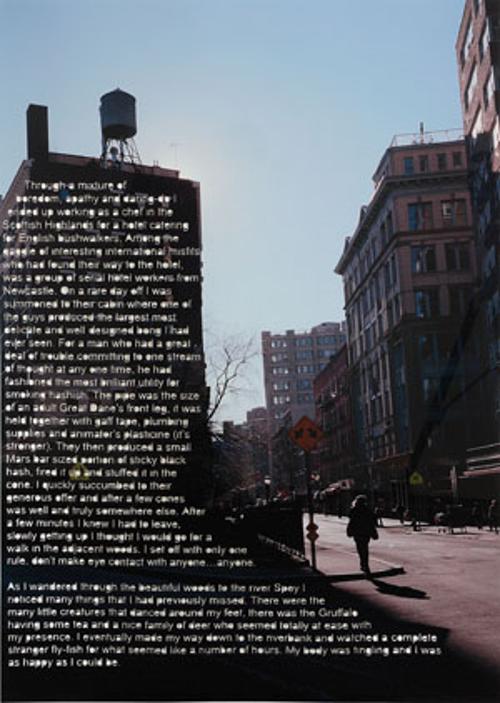
In response to conversations with a therapist as a narrative device: Martin Smith
Ryan Renshaw Gallery April 22 - May 10, 2008

Liminal
Curator: Colin Langridge Thomas Bachler, Andrew Dewhurst, Richard Giblett, David Martin, Todd McMillan, Ali Sanderson, Richard Wastell Carnegie Gallery, Hobart March 6 April 13 2008

